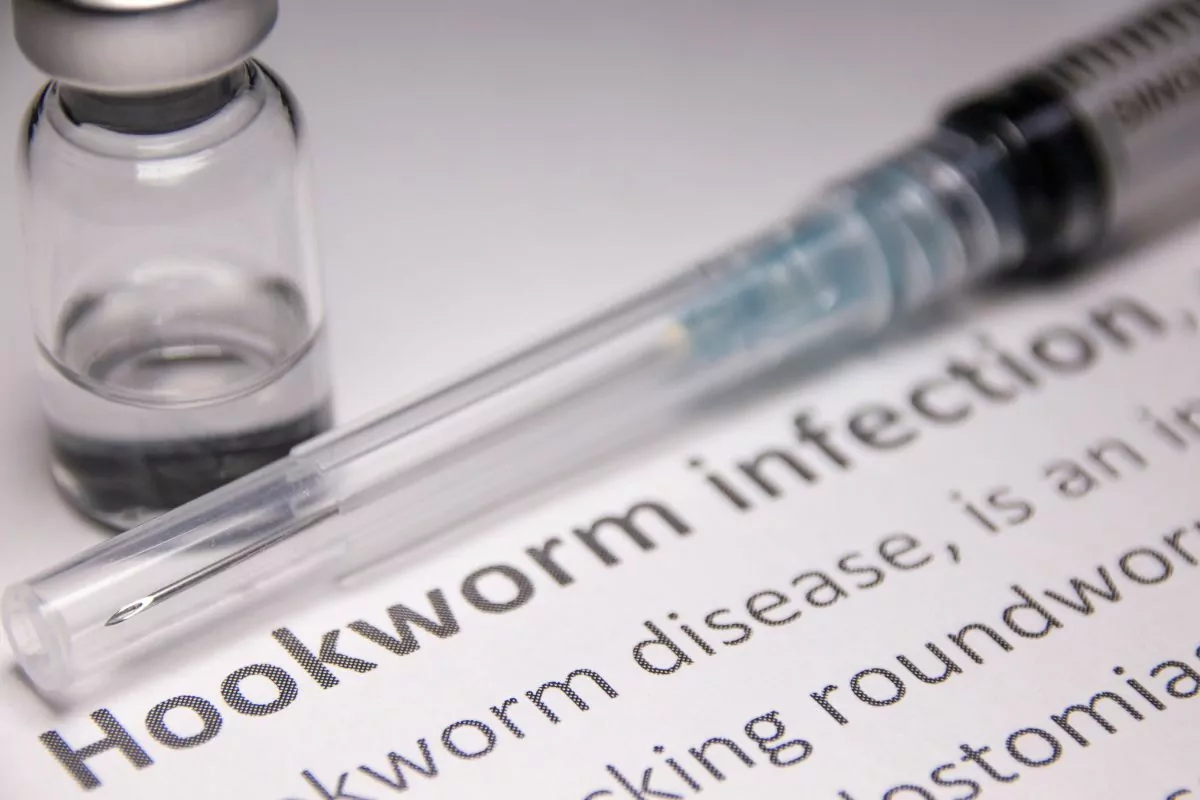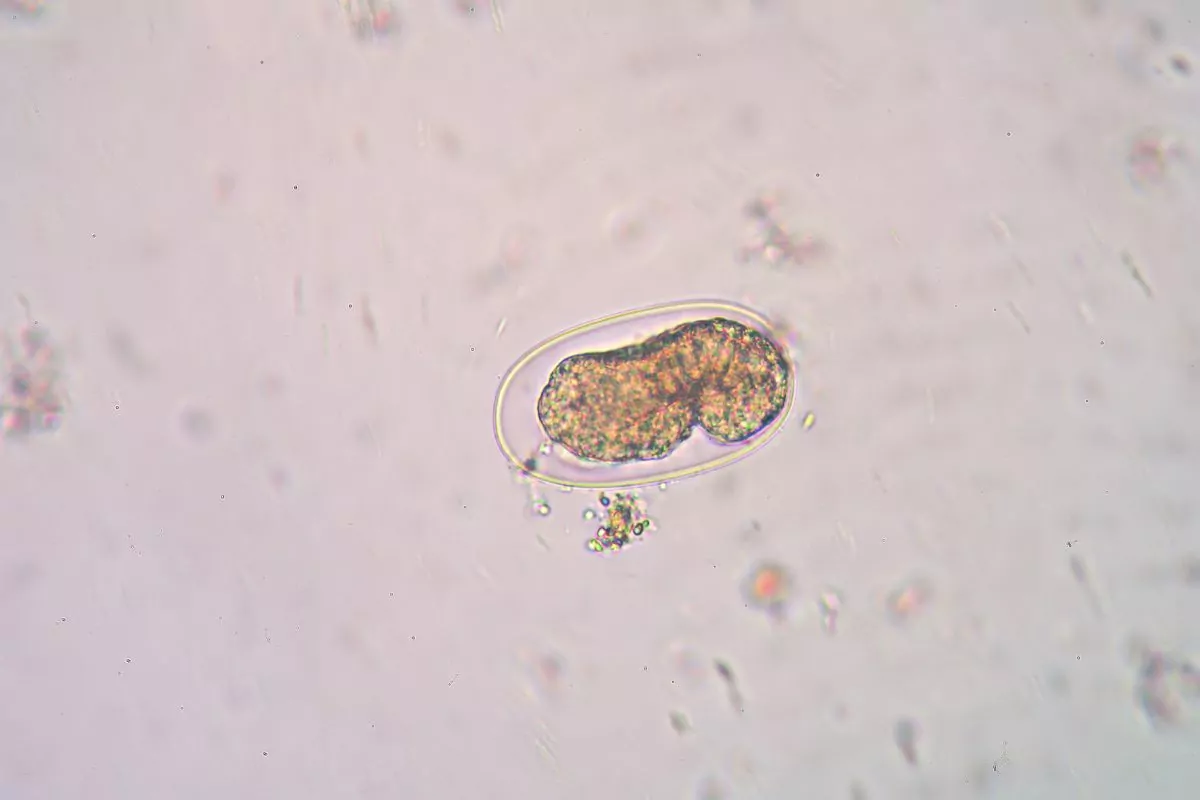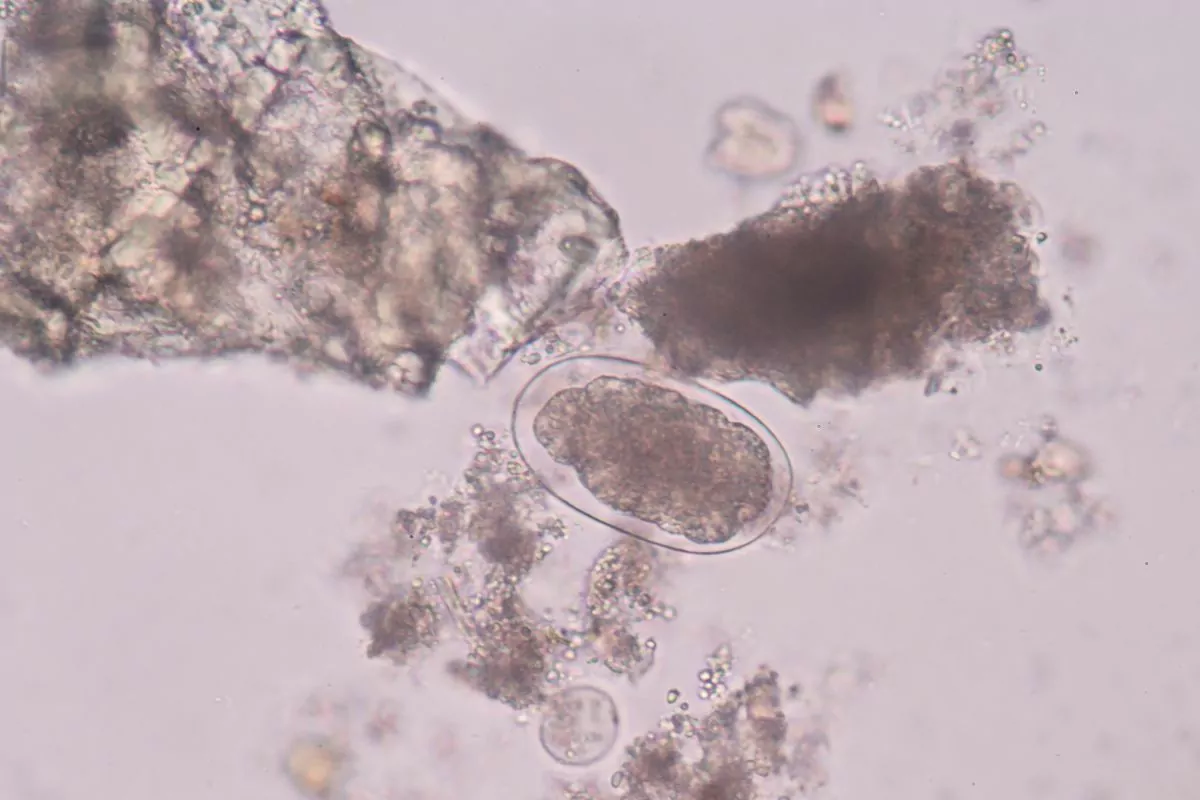We probably know someone who has undergone treatment for hookworm, but how many of us know about hookworm in dogs?
Growing up and watching movies about pirates, one person always struck us all. Your guess is as good as mine! The captain had always lost a hand and wore a hook. He orders the crew around with great power and always opens the treasure box with the hook.
With great imagination, we often wonder what hookworms look like. If hookworms are like pirates, do they have hooks? Are they commanding? And what treasures do they open with their hooks, if any exist?
Let’s satisfy our curiosity together.

What is Hookworm in Dogs?
Hookworms are worms in the intestines of dogs. They belong to the scientific phylum Nematoda, which are roundworms. Hookworms that infect dogs are Ancylostoma caninum, Uncinaria stenocephala, and Ancylostoma braziliense.
Hookworms are parasites that live off the nutrients in your dogs. They are found in tropical and subtropical areas and all over the United States of America.
Causes and Transmission
What causes hookworm in dogs is straightforward. Transmission of hookworms occurs easily in overcrowded environments coupled with poor sanitation. They are passed from one dog to another through the oral route, from the mother to the pups through the placenta, skin, breastfeeding, and skin penetration.
The placenta (in utero infection) and breastfeeding (trans mammary infections) are puppies’ most common and important routes.
What Do Hookworms Look Like?
You might be wondering what does hookworm look like in dogs. Hookworms got their name from their hook-like mouthpart, which they use to hold onto intestinal walls to prevent them from being passed out in feces. They are microscopic, about 0.08 to 0.12 inches (2 to 3 millimeters), and thus invisible to the naked eye.
The head part of the worm is bent on the dorsal side of the body and looks like a fishing hook. The eggs are morulated (look like a clump of different eggs) and are about 0.002 to 0.004 inches (0.05 to 0.1 millimeters) by 0.001 to 0.002 inches 0.03 to 0.05 millimeters) in size.
Hookworm Symptoms and Clinical Signs in Dogs
Hookworms can take up a lot of blood in the intestines, leading to blood loss in the body. They anchor their hooks on the intestinal lining and break up the tiny blood vessels. To ensure a continuous supply of blood, they inject an anticoagulant, which prevents the bleeding from stopping even long after feeding has stopped.
The most obvious symptom of hookworm in dogs is anemia (low hemoglobin level or red blood cells), which manifests as pale gums and makes the dog appear weak.
Other symptoms of hookworms in dogs include:
- Abdominal pain
- Bloody diarrhea (melena)
- Stunted growth
- A dull, dry hair coat
- Coughing
- Skin irritation, particularly at the paws
- Dehydration
- Scratching as the larvae move in the muscles
- Death.
- Respiratory diseases such as pneumonia can occur if many worms are in the lungs.
Remember that these symptoms could be another sign of a different disease; therefore, contact your veterinarian as soon as possible.
Diagnosing Hookworms in Dogs
Hookworms are diagnosed based on a microscopic examination of the dog’s stool. This is known as fecal flotation. The fecal flotation procedure is mixing the stool with a flotation solution, allowing hookworm eggs to float on the surface. The eggs are collected by placing a glass slide in the solution and inspecting it under a microscope.
The test is not readily reliable in young puppies as the larvae are too young to lay eggs. In such situations, the veterinarian will require the medical history of the puppy’s mother.
Your veterinarian will also ask for some medical history, travel history, and environmental conditions of the house to rule out other infections.

Are Canine Hookworms Contagious to Humans and Other Animals?
Yes, canine hookworms can infect other people and animals. In humans, this is a zoonosis (a disease transmitted from animals to humans). The transmission of adult hookworms from one animal to another is impossible, but the larvae are.
The larvae can burrow through the skin of other animals and humans, most commonly when they walk barefoot in infected soil, such as on the beach, in a garden, or in any place where pets can leave their poop.
Since humans and other animals are not the right hosts for the canine hookworm, the worms do not grow to maturity and die after several weeks. However, they cause severe itching as they move through the body’s muscles. This is known as “ground itch” at the site of penetration, and one can see visible marks on their body from the migration.
Sometimes, the migration of the larvae becomes problematic when they damage internal organs such as the eye, known as cutaneous larval migrans. Although cutaneous larva migrans are treatable, it causes severe pain and discomfort in the infected individual.
However, is hookworm contagious to dogs? It is as if dogs pick up the larvae from the environment.
The Canine Hookworm Cycle
Like any animal, hookworms have a life cycle (egg, larvae, adult). The hookworm lifecycle in dogs lasts about 2 to 3 weeks.
Male and female hookworms mate in the intestines. Female hookworms release hundreds of tiny, microscopic eggs into the surrounding environment through the infected dog’s poop. Under the right environmental conditions, the eggs hatch in 2 to 9 days, and the larvae remain infectious in the soil for several weeks or months.
Dogs get infected by the environment when they sniff feces or soil or lick their paws, swallowing the larvae. Some larvae burrow through the dog’s skin when they play in the soil. The ingested larvae end up in the intestines to complete their life cycle.
Some larvae move to the windpipe (trachea) and lungs, and the dog coughs them out after swallowing them. The intestines are the site of maturation for the hookworm larvae. Some larvae stay dormant (arrested development) in muscle tissues and wait for the right time, such as pregnancy, to reactivate.
How are Hookworms in Dogs Treated?
Treatment of hookworms in dogs is by administration of anthelmintics, popularly known as “deworming.” These drugs are usually given orally in syrups or tablets, but some are injectable.
These drugs only target adult hookworms; hence, repeating the medication in 2 to 4 weeks is appropriate to kill any recently hatched worm. The time frame is based on the worm’s lifecycle and might be different for other worms.
Your veterinarian will recommend iron and other vitamin supplements to your dog, depending on the severity of the infestations. Puppies who are severely anemic take blood transfusions.
There is currently no medication available to kill hookworm eggs. Our backyard and neighboring environment must be kept free of feces, as these contain eggs if the dog is infected.
Your veterinarian will conduct another flotation test after treatment to determine if the dog is free of hookworms.
Preventative Measures
One of the best preventive measures is to ensure your dog is on their regular heartworm preventive drug, as these drugs are also effective against hookworms.
Puppies should be started on dewormers as early as 2 to 3 weeks since there is in-utero and transmammary transmission; deworming nursing dogs should occur at this time too. The deworming schedule for puppies should be every two weeks. Regular deworming of adult dogs is required to prevent infestations.
Also, do not allow your dogs to poop in open spaces in the environment, as this would lead to environmental contamination. Pick up your dog’s poop with gloves each time and dispose of it well.
Hookworm thrives in filthy, overcrowded kennels; hence, we recommend proper kennel hygiene. Cleanup and disinfect the kennel and backyard regularly, and avoid taking your dog to places with lots of poop.
Maintain proper personal hygiene, especially with children, who often play in the soil. Always wash your hands at all times and wear footwear, especially when walking outside.
Hookworm Resistance in Dogs
As the years go by, hookworm resistance in dogs is becoming a big issue. Some hookworm strains carry and spread resistance genes. These hookworms are resistant to all and most of the anthelmintics available (those drugs do not work on them anymore).
These dogs with resistant hookworms continue to shed hookworm eggs into the environment even when they are on medication, which is contagious to dogs. The genetic strains are easy to pass on; with time, a whole population of hookworms in an infected soil becomes resistant.
The resistance to anthelmintics in hookworms started with greyhounds, but now it is an entire problem for many dogs. Researchers are on the lookout to develop new drugs to curb this, but in the meantime, let us only give the right medication at the right time and in its proper dosage.
Canine Hookworm Dermatitis
Hookworm dermatitis in dogs occurs through the penetration of the larvae into the animal’s skin. This causes severe dermatitis (inflammation of the skin) around the paws and interdigital spaces and is accompanied by itching and small, raised skin bumps. All three species of hookworms can cause hookworm dermatitis.
Early signs in dogs are skin bumps with redness, while later stages include painful, swollen pads with thickened interdigital spaces.
Since these skin conditions are also typical of mite infestation, vets do a skin scraping to rule out mite infestation.

Summary
Hookworm can be frightful, especially in puppies, but it is treatable when caught on time. Use this as a guide to constantly be on the lookout to prevent your beloved dogs and yourself from getting hookworm infestations.
